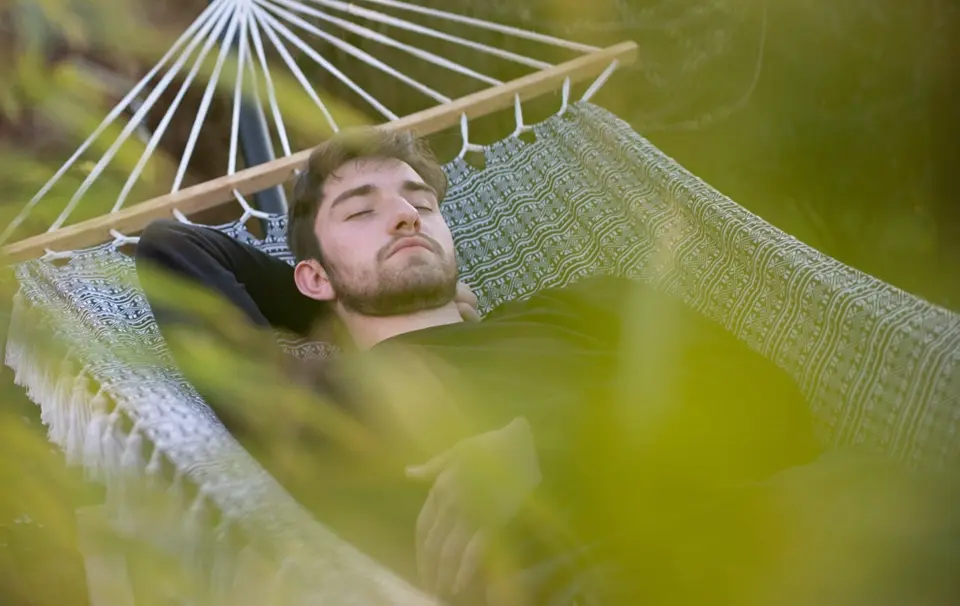La Siesta: A Slice of Spain’s Heart and Soul
With its sun-kissed scenery, dynamic culture, and spirited energy, Spain is where every moment turns into a cherished memory. Picture yourself walking the vibrant streets of Barcelona, uncovering the history of Granada, or dancing flamenco in Seville.
Spain offers a colorful tapestry of traditions and customs, one of which is the cherished practice of “la siesta.”

La siesta is much more than a simple nap: it’s a typical Spanish lifestyle and a proof of the country’s unique approach to living well.
THE ESSENCE OF SPANISH CULTURE
To truly appreciate la siesta, it’s very important to understand its place in the broader context of Spanish culture. Spain is known for its rich history, diverse regional traditions, and a laid-back lifestyle that emphasizes the joy of living.
From the lively tapas bars of Madrid to the enchanting flamenco performances of Andalusia, Spain thrives on a rhythm that celebrates the present moment.
Meals are a central part of Spanish life, and lunch is often a lengthy, leisurely affair. La siesta naturally follows this substantial meal, allowing Spanish people to recharge and savor their afternoons. This break is not just about sleep. It’s about taking a step back, enjoying some downtime, and preparing to embrace the rest of the day with renewed vigor.

WHEN IS SIESTA TAKEN
As we said earlier, la siesta, the Spanish word for “nap,” is much more than a mere rest. It’s a cherished ritual deeply woven into the fabric of Spanish life.
Traditionally taken from around 2 p.m. to 5 p.m., this mid-afternoon break is both practical and cultural, reflecting the rhythms of life in Spain.
A TRADITION ROOTED IN CLIMATE
The origins of la siesta are as much about necessity as they are about tradition.
Historically, Spain’s climate, particularly in the hotter regions, was sweltering during the afternoon hours. Before the advent of modern air conditioning and cooling systems, taking a break during the hottest part of the day was essential for comfort and productivity.
This way, la siesta provided a respite from the sun’s intense rays, allowing people to rest and avoid the physical strain of the heat.

A RITUAL OF REST AND RECONNECTION
Imagine a Spanish town as the clock strikes two in the afternoon.
The sun casts a warm, golden glow over the streets, transforming them into a picturesque scene of tranquility. The bustling activity of the morning subsides, and a calm, almost magical quietness envelops the town. Shops close their doors, and people head home or seek out cool, shaded spots where they can unwind.
Families gather around the table for a leisurely lunch, sharing stories and enjoying each other’s company. Friends might relax in a nearby park, or simply take a moment to themselves, savoring the stillness and tranquility.

A MOMENT TO SAVOR
It’s a time to slow down, savor the present, and recharge before the evening’s activities resume.
It’s an opportunity to enjoy a few quiet moments, reflect on the day, and reconnect with oneself or loved ones.
This practice reflects a broader cultural appreciation for balance and well-being, emphasizing that life is as much about enjoying restful moments as it is about being active and productive.
La siesta embodies a philosophy of living that cherishes life’s simple pleasures

MODERN ADAPTATIONS OF LA SIESTA
While the traditional siesta might be less prevalent in bustling urban areas today due to modern work schedules and global business practices, the spirit of la siesta endures. In many places, people still honor this tradition in their own way, finding moments in the day to rest, recharge, and connect.
In essence, la siesta is a celebration of life’s quieter moments, a nod to the importance of balance, and a reminder to cherish time spent with those we care about.
It’s a beautiful practice that invites us all to embrace the art of taking a pause and finding joy in life’s simplest pleasures.

BEYOND THE NAP: THE ART OF UNWINDING
After the siesta, the streets come alive once more, with people heading out to enjoy late afternoon strolls, lively conversations over coffee, or tapas with friends.
In modern Spain, not all businesses close for a siesta, particularly in bustling urban areas. However, the essence of taking a break and recharging remains. Whether it’s a quick afternoon pause or a more leisurely retreat, the spirit of la siesta is alive and well, reminding everyone of the importance of balance and enjoyment in daily life.

YOUR INVITATION TO VISIT SPAIN
If the tradition of la siesta has sparked your curiosity, why not experience it firsthand? Imagine the joy of wandering through historic markets in Spain, indulging in world-renowned cuisine, and soaking up the sun while savoring a relaxed afternoon.
Spain invites you to immerse yourself in its warm embrace, where every corner holds a story, and every moment is an opportunity to create lasting memories.
Whether you’re exploring the architectural marvels of Gaudí, dancing through the vibrant festivals, or simply enjoying a leisurely meal with locals, Spain promises an adventure like no other.
So, set your itinerary, and embrace the charm of Spain. Let the magic of la siesta and the warmth of Spanish hospitality transform your journey.
The siesta awaits—come and discover the rhythm of Spain for yourself!





